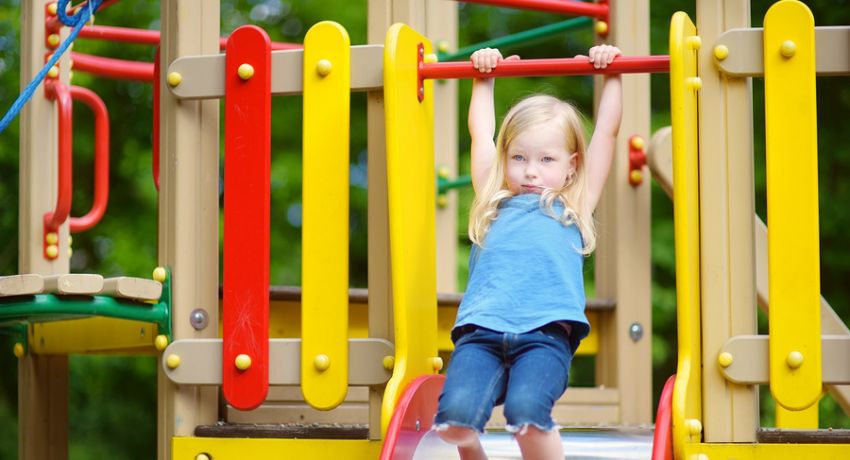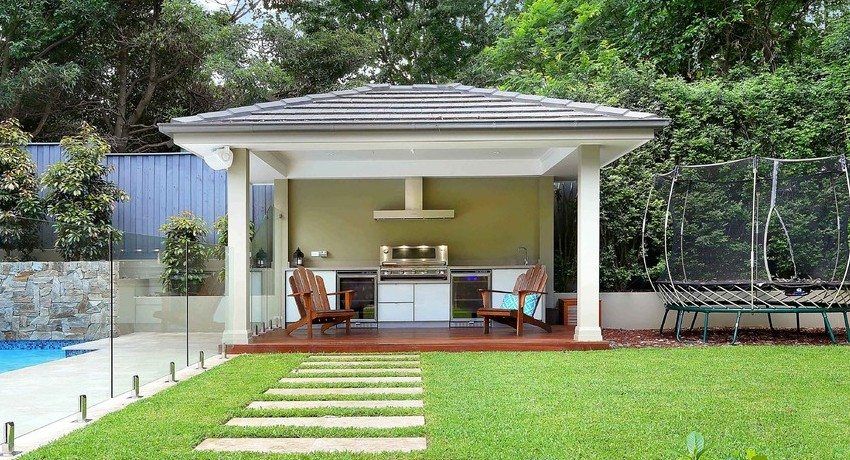From this article you can find out what properties and characteristics of paint for wallpaper for painting, and get acquainted with the conditions suitable for its use in a residential type. The article considers the feasibility of using wallpaper as a basis for coloring, and the advantages of this approach to the implementation of wall decoration, as well as the types of tinting compositions suitable for decorating canvases, their compatibility with different materials.

Finishing the living room, which is better: wallpaper or wall painting
It may seem to many apartment owners that it is more expedient to paint the walls in the room instead of wallpaper; photos of rooms with a similar finish look just as good. However, there are a number of features that can affect the choice of finishing material.

Painting the walls, as well as sticking wallpaper for painting, equally allows to give the interior the necessary flavor and refresh it.
To determine which finish is more suitable for the room, the following points should be considered:
- condition of the walls (the presence of defects);
- strength characteristics of the coating, how simple the dismantling system is;
- prices for the purchase of materials, as well as prices for the services of professionals.
The most important criterion in the choice of dye or wallpaper for wall finishing is the condition of the surfaces. Coloring compounds are not able to mask the cracks and irregularities that may be present in the plaster. To achieve a high-quality result, the damaged surface in this case will have to be completely updated, which will significantly affect the timing and cost of finishing works.
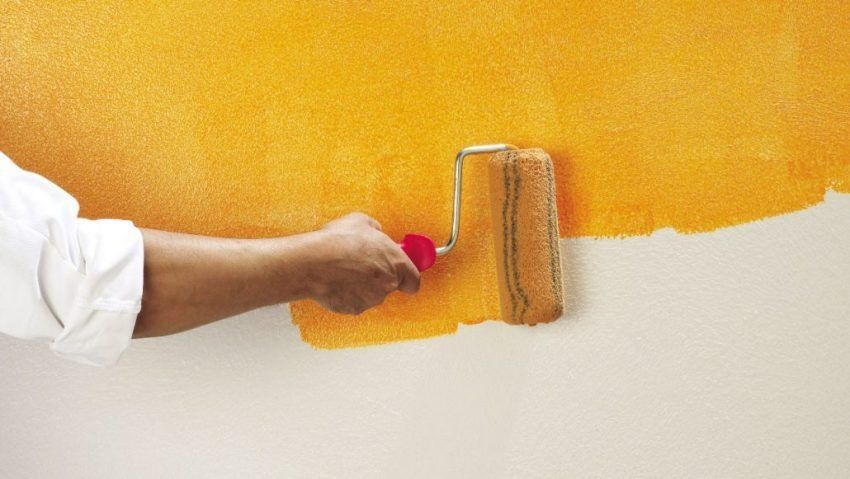
If there are damages on the surface of the walls, it is more expedient to use wallpaper with thick cloths and textured surface, for example, vinyl wallpaper with embossed or non-woven. High quality materials effectively hide the base errors without additional training. If the plaster on the walls is in excellent condition, you can do with the usual painting of the surface. This procedure is much cheaper than wallpaper and takes less time.
Well-chosen wallpapers are able to maintain their surface in perfect condition for several years. Modern vinyl and non-woven materials exhibit high resistance to stains and moisture. Allowed to clean the surface of the cloth with a damp sponge and detergents. In extreme cases, you can paint non-woven wallpaper and update their appearance. Even a high-quality dye does not have such advantages, so the canvas for painting is considered a more practical and durable option.
Helpful advice! Painting of non-woven base wallpaper can be done if there are no serious damages on the canvases. Before buying paint, you should make sure that the finish fits tightly to the wall, and there are no peeling off, otherwise there is no point in acquiring the composition to renew the surface.
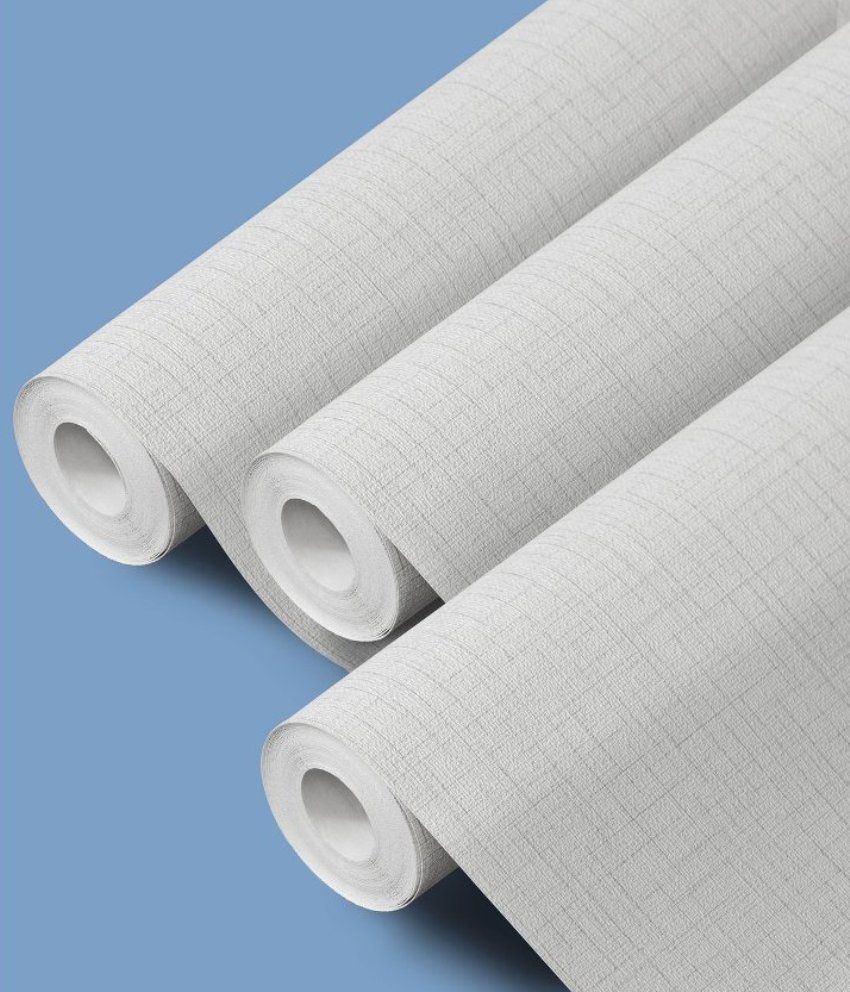
By the criterion of value, paint benefits as an independent finishing material. The cheapest version of the composition has an acrylic base (from 400 rubles). Banks with a volume of 10 liters is enough for two-layer painting of walls in a room with an area of 100 m? (subject to use of primer). Latex based dyes are more expensive than acrylics. The price of painting the same surface with Dulux (from 700 rubles) will be 4 times more expensive. The most expensive version of the dye – ceramic composition. This coating is characterized by a high level of strength as well as color intensity.
The cost of wallpaper can be very different. The most budget option is paper products (from 400 rubles per roll.). A little more expensive are non-woven (from 800 rubles / roll.) Canvas and vinyl (from 600 rubles / roll.). They can be a durable and optimal solution, especially when it comes to buying wallpaper for painting. Fiberglass materials and products from the author’s collections are the most expensive types of finishes, so they are used less frequently.
The cost of gluing and painting wallpaper (price per m2):
| Name of service | price, rub. |
| Primer application for painting | 40 |
| Dismantling the old coating | 70 |
| Wallpapering for painting | 200 |
| Two layer staining | 240 |
| Puttying the walls in 2 layers under the wallpaper | 250 |
The use of dye for walls will be the most economical and quick solution if the substrate surfaces are in good condition. Otherwise, it is better to give preference to wallpaper. When the colors of the paintings get bored or appear dirty, you can buy paint for wallpaper for painting the color you like and change the design.
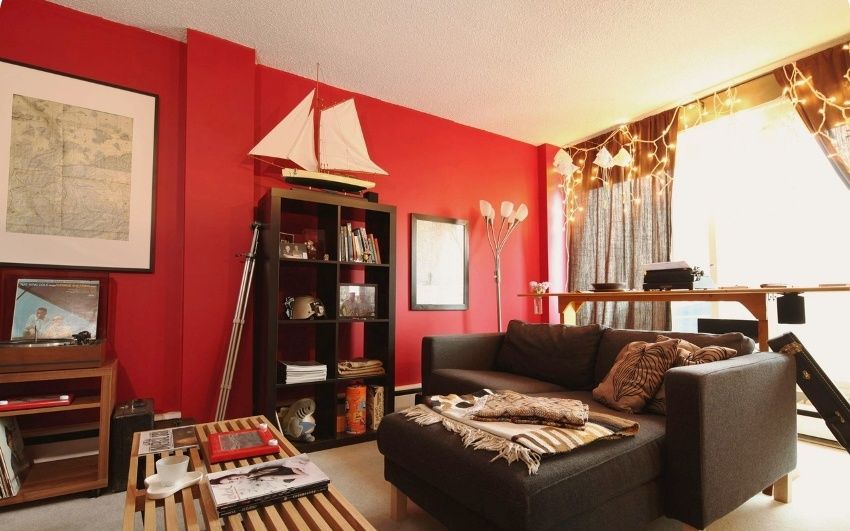
The range of wallpapers is varied. Consumer products that imitate the surface of various materials are in particular demand. They can be used to finish the entire room around the perimeter or its individual sections. This makes it possible to effectively and inexpensively implement zoning of space or create visual accents.
Relief canvases allow you to choose the desired surface texture, and with the help of paint for wallpaper you can easily and quickly change the shade of the coating. This procedure is relatively inexpensive and in the decorative sense is much more advantageous than the usual coloring.
Note! The color of the wallpaper can be changed from 3 to 10 times. It depends on the type of material and its properties.
Before you buy materials for finishing walls, you need to figure out what wallpaper can be painted and what paint is suitable for the selected type of base. A general idea of the canvases, their properties and technical characteristics will allow you to make the right choice.
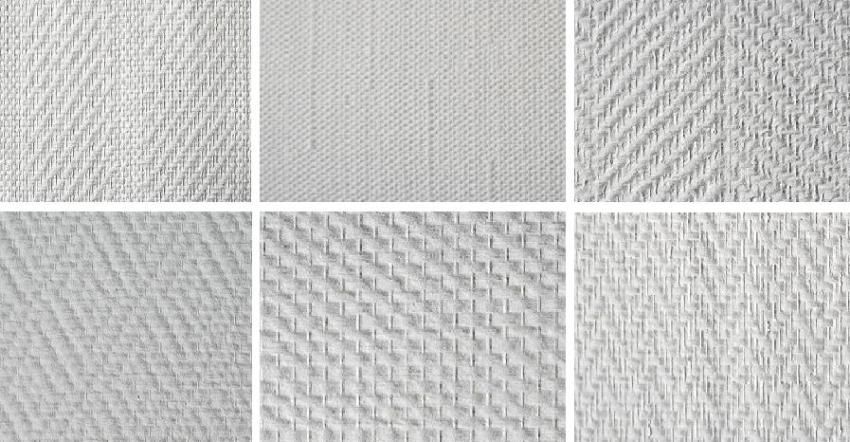
As a basis for coloring wallpaper is used with a different type of surface:
- textured;
- smooth;
- patterned.
It should be borne in mind that wallpaper, imitating the texture of natural wood, it is impractical to paint in blue or, for example, lilac color. If you intend to finish the walls in the children’s room, it is better to choose cheerful colors that will be applied over a neutral base with a suitable theme or pattern with a slightly pronounced relief.
Most often, wallpaper for painting is used when there is a need for a regular change of finish. This is facilitated by various reasons:
- the desire of the apartment owner to constantly update the interior;
- hit on the floor of pollution due to special operating conditions characteristic of the bathroom, kitchen, hallway;
- mechanical damage to the surface, characteristic of high-traffic areas or children’s rooms.
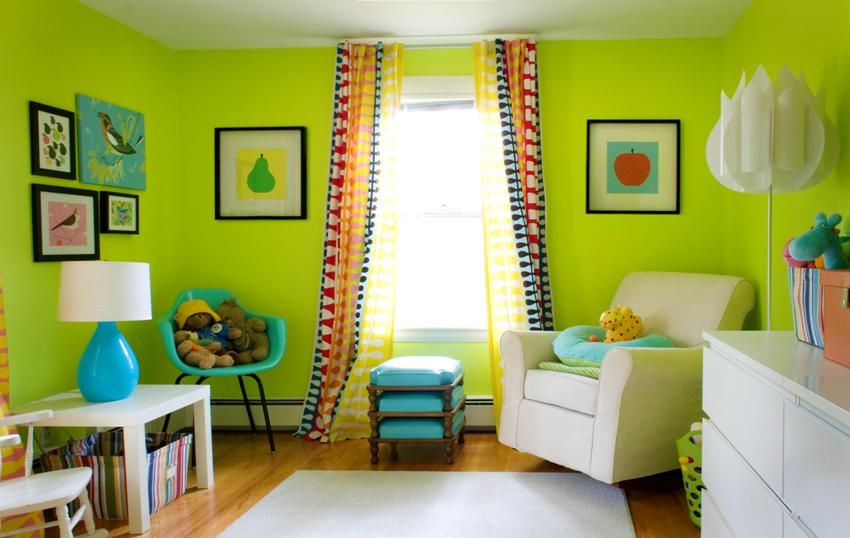
When it comes to serious loads on the surface, many apartment owners have a question, is it possible to paint a certain type of wallpaper and how often such a procedure is allowed. Canvases for painting are often used in children’s rooms, where there is a need to eliminate the arts, which leave the kids on the walls. It is not recommended to change the color of paper and vinyl too often. Such material is not subject to rapid deacidification and the likelihood that the finish will fall off is very small, but it will not last as long as it should be.
Also, buyers are interested in whether it is possible to paint wallpaper using compositions on a water-based basis, since not all types of coatings are able to tolerate contact with a liquid. The best option for frequent repainting are wallpaper with waterproof properties. This category includes those products for which water-based glue is used.
The dye is selected on the basis of personal preferences, but it is desirable to take into account the instructions attached to the wallpaper. The composition should not overlap the texture of the coating or create difficulties during the painting of wallpaper for painting with your own hands.

The safety of the dye (absence of toxic fumes) should be manifested at all stages:
- preparation of material for dyeing;
- applying the composition on top of the wallpaper;
- operation throughout the entire service life.
Important! After repairs, there may be enamel intended for processing door and window structures, or a facade dye. It is not allowed to use these materials for processing wallpaper on the walls of residential premises.
The traditional type of wall decoration is paper wallpaper. Most of them are not intended for coloring. The usual options for paintings are found among such common types of finishes as non-woven and vinyl wallpaper. In order not to engage in dismantling the old coating and sticking new material, many apartment owners are wondering whether it is possible to paint wallpaper not for painting in order to save their own time and effort. Caution should be exercised in this situation.

Experts say that you should not resort to staining conventional wallpaper, the characteristics of which do not involve the implementation of this procedure. Not only single-layer, but also double-layer wallpaper can suffer from the use of dye.
Some types of paintings are not able to provide a uniform result of the application of the composition. If paper wallpapers from a low-cost segment are used as finishing, staining can lead to negative consequences:
- the appearance of bubbles;
- peeling of cloths from the wall;
- deformation and spreading of the material.
For this reason, it is better to dismantle the old coating and stick the sheets intended for painting.
Non-woven wallpaper has many advantages. They are durable, not prone to tearing and stretching when wet. Their non-woven base plays the role of a kind of reinforcing layer that prevents the appearance of small cracks in the surface of the base. The process of gluing material is very simple, so the question whether it is possible to paint non-woven wallpaper in the room is very relevant.
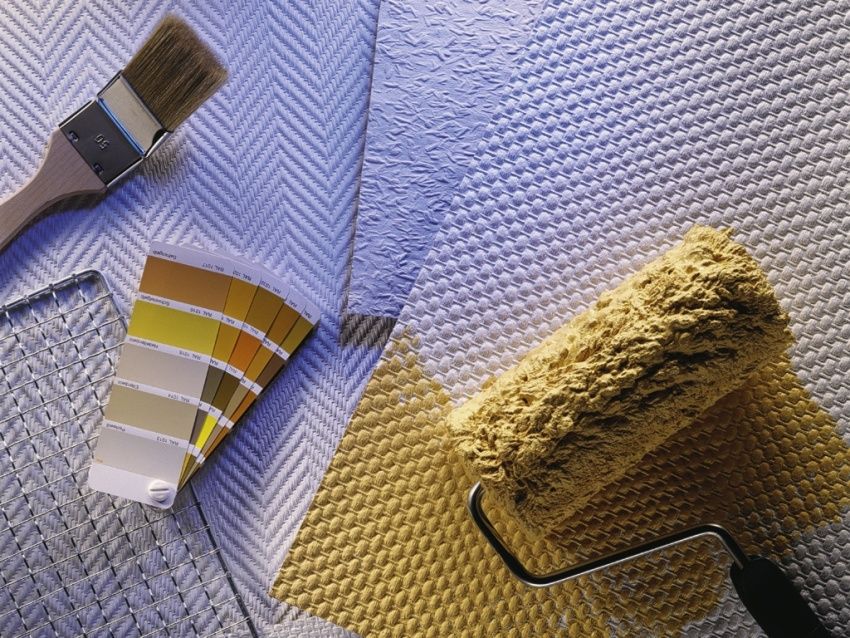
When buying is worth paying attention to the label manufacturer. Products that are not intended for dyeing, without prejudice to the finish, can be coated with a tinting compound no more than 1-2 times. On the wallpaper with the mark “for painting” the composition lays much better than on ordinary canvases. Such products are durable, less susceptible to deformation. Their use eliminates the likelihood of incompatibility of wallpaper with dye.
Note! According to the information declared by manufacturers, high-quality non-woven wallpapers can be repainted up to 10-15 times. In practice, it is advisable to do this procedure no more than 6-8 times, otherwise the decorative properties of the coating are significantly reduced.
To decide whether to paint vinyl wallpaper, and how best to perform this procedure, you should understand the features of the existing range of products.
There are three types of vinyl sheets:
- Foamed.
- Kitchen.
- Flat.
Foam vinyl is a thick material in a roll. It can be used to mask the defects of the walls. On sale there are smooth and embossed coating options. And the wallpaper can be both color and neutral, for example, beige or white. Due to the presence of a thick PVC layer, this type of finishing material is subject to mechanical damage.
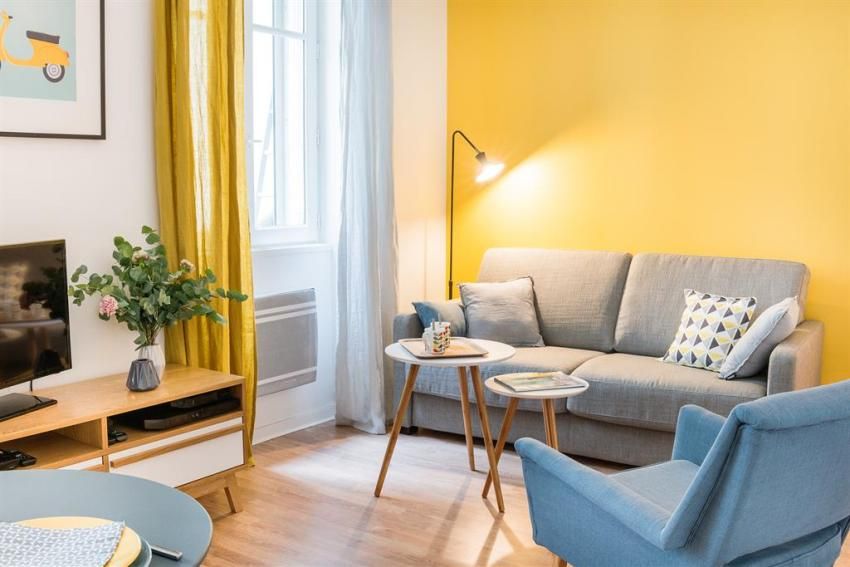
The dyeing procedure will create a protective layer on the surface of the canvas, which will reduce the likelihood of damage and scratches on contact with various objects.
Kitchen products are classified as special purpose wallpaper. Their canvases are very dense. Since the finish in the kitchen needs to be cleaned regularly, the surface of such wallpaper is endowed with a mild relief pattern. The advantage of kitchen products is practicality. Dirty surface finish is easy to clean or repaint. This wallpaper combines with any kind of interior paint.
Flat wallpaper is the only kind of vinyl coating that is not intended to be painted. Such canvases are decorated with multi-colored ornaments that will completely disappear if you use a tinting compound.
Each type of wallpaper puts forward its own compositional requirements. To decide what paint to paint wallpaper, it is enough to decide on the choice of material for pasting walls.
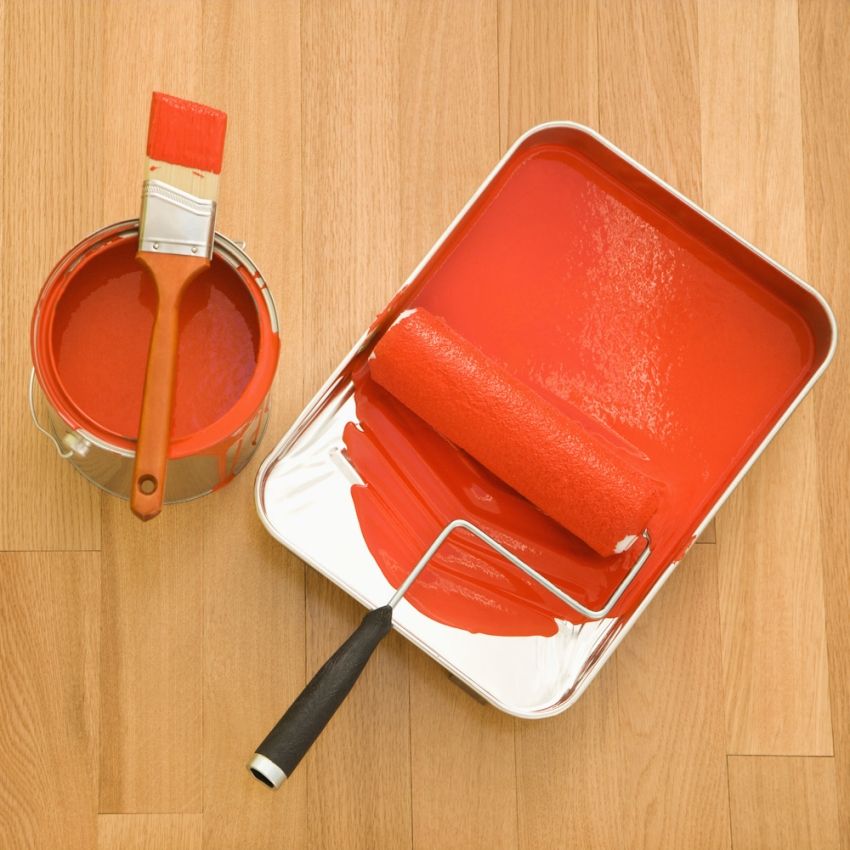
Paper canvases are combined with almost any kind of paint. The best option for these purposes – the composition on a latex basis. Such dyes do not make webs of paper and lay on top of them in a very thin layer. Technical characteristics of latex compounds have a positive effect on the performance properties of the finish.
Helpful advice! To save on the staining of paper wallpaper, you can use the water-based composition.
Water-based dyes are not recommended for processing non-woven wallpaper. In this case, it is preferable to use acrylic or latex compositions. This type of wallpaper can be painted with both the front side and the reverse.
How to paint the wallpaper for painting on the reverse side:
- The dye is applied on the wrong side of non-woven fabrics.
- The material must be left on time for the composition to dry.
- Wall sticking is performed according to standard technology.

After the glue dries, paint will appear on the front side of the canvas. In those areas where there is no upper polymer layer, the shade will differ from the main background. For the processing of vinyl cloths can only be used acrylic paint. Since this type of material is partially made of non-woven fabric, staining on the reverse side is allowed.
Glass cloth wallpaper is perfectly combined with latex and acrylic compositions. Use as a primer of wallpaper glue, diluted with water, will reduce the consumption of dye. Glass cloth fabrics need a two-layer dyeing with a break of 12 hours between applications.
The choice of color paint for wallpaper for painting is an important component of a beautiful design. For decoration of residential premises most often used the following shades:
- cream and beige;
- brown and sandy;
- pale pink and peach;
- yellow and light green;
- caramel and apricot;
- blue and milky.
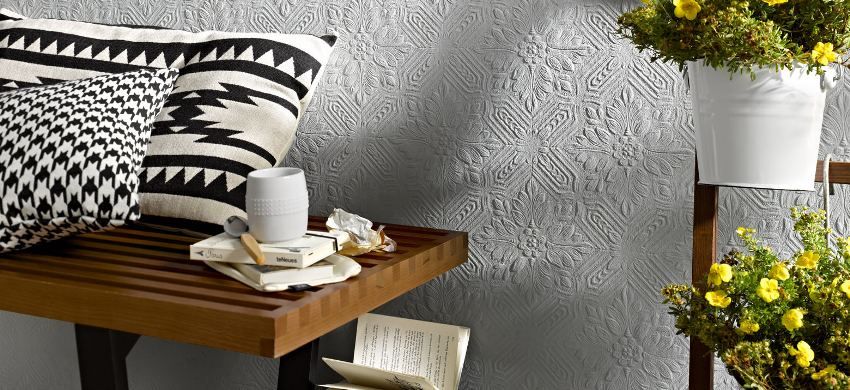
Helpful advice! In order to minimize the number of stitches, it is recommended to select wallpaper for painting with wide canvases.
The degree of reflection of light emit the following types of colors:
- Glossy.
- Semi-gloss.
- Matte.
- Semi-gloss.
- Satin
It is advisable to test the composition in an inconspicuous area before painting the wallpaper, painting the wallpaper can be started only after the adhesive has fully dried (at least one day).
Regardless of the chosen type of wallpaper, interior finishing works begin with the preparation of the room and surfaces. It is necessary to remove all furniture from the room or move it to the side, covered with textiles or film. It is also recommended to glue the baseboards and lay the floor.

Experts do not recommend using a brush to paint wallpaper. For this purpose, it is better to take a foam roller. The tool must necessarily absorb paint well and at the same time do not spray the composition during application to the walls. Do not use the old nozzle. The tool must be new.
How to paint a paint wallpaper for painting:
- Small nozzle for hard-to-reach areas (no more than 10 cm).
- Large nozzle for uniform distribution of the dye over large areas (about 25 cm).
Wallpapering is carried out in accordance with the requirements of the manufacturer. This takes into account the type of wallpaper: paper sheets, non-woven, glass cloth or vinyl. Do not overlap the material strips. Better if the canvas will be located end to end.

How to paint wallpaper for painting:
- The paint is mixed until homogeneous and poured into a plastic tray.
- The roller is impregnated with dye by rolling on the tray.
- Excess composition should be squeezed using the embossed part of the tray.
- The work must begin with the upper corner of one of the walls, rolling the roller from bottom to top.
- Each subsequent strip of paint is applied with a partial overlap of the previous one to avoid gaps.
Skirting areas and other hard-to-reach areas can be modified using a brush. When the first coat of paint dries, you can apply the second. The process of coloring wallpaper is quite simple, so anyone will cope with this task. In stores you can buy any shade of dye in finished form or order the service of computer selection of pigment.
